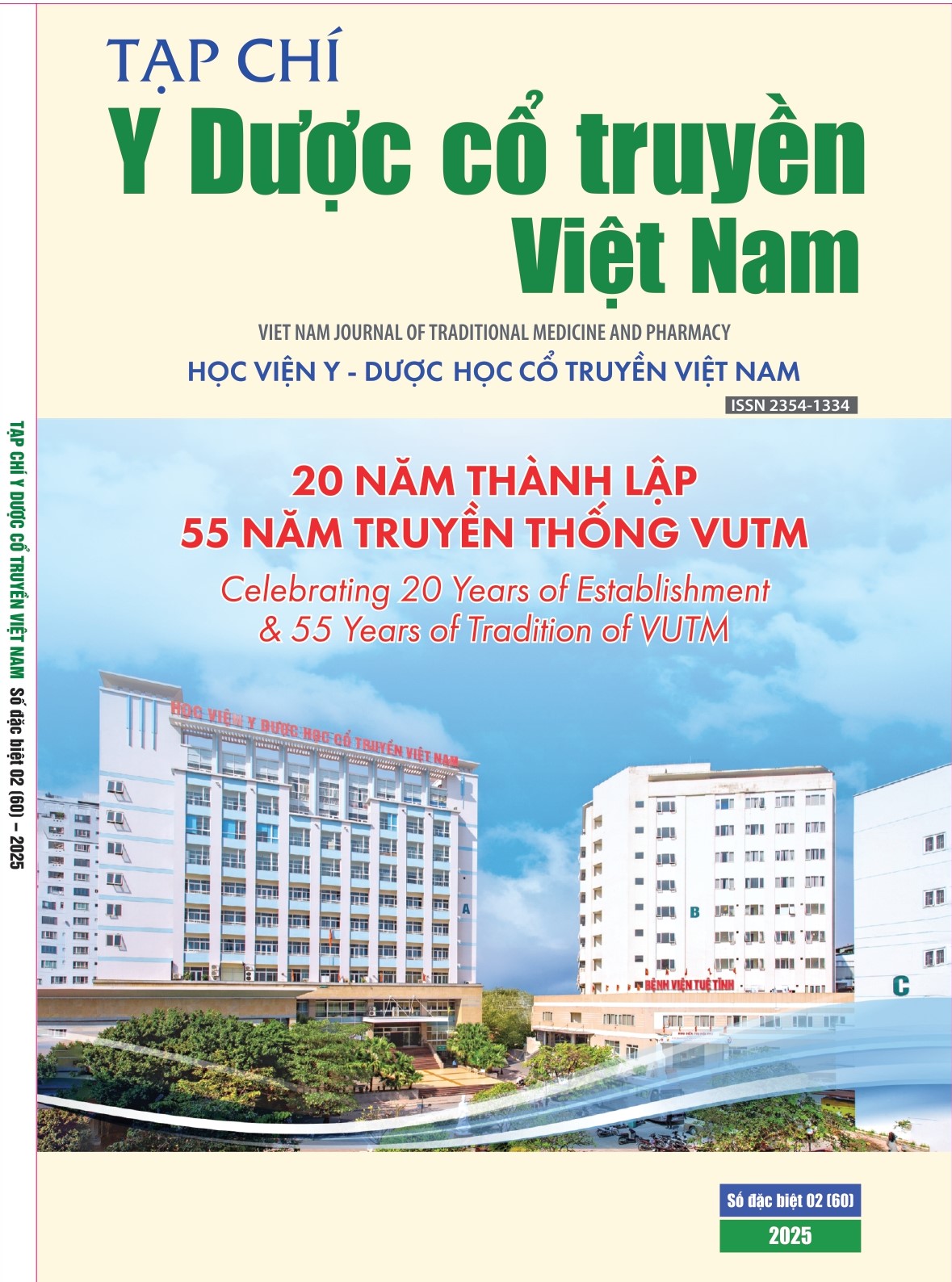Researching the dyslipidemia treatment effect of Ha mo NK total extract in experiment
Main Article Content
Abstract
Objective: To study the acute toxicity and dyslipidemia treatment effects of Ha mo NK total extracts in experiment.
Subjects and methods: Study the acute toxicity on Swiss albino, both genders, weighing 18 - 22g. Study the dyslipidemia treatment effects on Swiss albino, both genders, weighing 25 ± 2g using empirical endogenous model.
Results: The LD50 of Ha mo NK total extract has not been determined, there were no signs of acute toxicity at a dose of 59.52 grams of Ha mo NK/kg (12,33 times higher than the expected clinical dose). The Ha mo NK total extract at a dose of 4.8g/kg/day (equivalent to the expected clinical dose) and 14.5g total extract/kg/day has the effect of reducing the concentration of total cholesterol and non-HDL-Cholesterol with total cholesterol reduction levels of 20.4% and 18.1% respectively compared to the model batch, the difference is significant statistics at p<0.01, tends to increase HDL-Cholesterol concentration, and reduce Triglyceride in white mice modeled with P-407-induced dyslipidemia.
Conclusion: The total extract Ha mo NK at a dose 12.33 times higher than the expected human dose but has no acute toxicity in mice, orally. The total extract of Ha mo NK at a dose of 4.8g/kg/day (equivalent to the expected clinical dose) and 14.5g/kg/day (3 times the expected clinical dose on humans) tended to increase HDL-Cholesterol index, and reduce Triglyceride; and had the effect of reducing total cholesterol (TC) and non-HDL-Cholesterol index in white mice modeled with dyslipidemia by P-407.
Article Details
References
2. Benjamin EJ, Muntner P, Alonso A, et al. Heart Disease and Stroke Statistics- 2019. A report From the American Heart Association, 2019, Circulation 139: e56–e528.
3. Ministry of Health Viet Nam. Roi loan chuyen hoa Lipid mau, Huong dan chan doan va dieu tri benh Noi tiet - Chuyen hoa, Medical Publishing House, 2015, pp.255-262
4. WHO. Working group on the safety and efficacy of herbal medicine. Report of regional office for the western pacific of the World Health Organization, 2013.
5. Litchfield JT, Wilcoxon F. A simplified method of evaluating dose-effect experiments. J Pharmacol Exp Ther, 1949,96(2), pp.99-113.
6. Millar JS, Cromley DA, McCoy MG, et al. Determining hepatic triglyceride production in mice: comparison of poloxamer 407 with Triton WR-1339. J Lipid Res., 2005, 46(9):2023-2028. doi:10.1194/jlr.D500019-JLR200.
7. Kones R, Rumana U. Current Treatment of Dyslipidemia: A New Paradigm for Statin Drug Use and the Need for Additional Therapies. Drugs, 2015, 75(11): 1187-1199. doi:10.1007/s40265-015-0428-4.
8. Mohamed AS, Ibrahim WM, Zaki NI, et al. Effectiveness of Coelatura aegyptiaca Extract Combination with Atorvastatin on Experimentally Induced Hyperlipidemia in Rats. Evidence-Based Complementary and Alternative Medicine, 2019: e9726137. doi:10.1155/2019/9726137.
9. Dong X, Fu J, Yin X, et al. Cassiae semen. A review of its phytochemistry and pharmacology. Mol Med Rep., 2017;16(3):2331-2346. doi:10.3892/mmr.2017.6880.
10. Pham Thuy Phuong. Effects of Ha mo NK hard capsule on experimental atherosclerosis model. Journal of medical research, 2021, No 5, pp.95-103.

